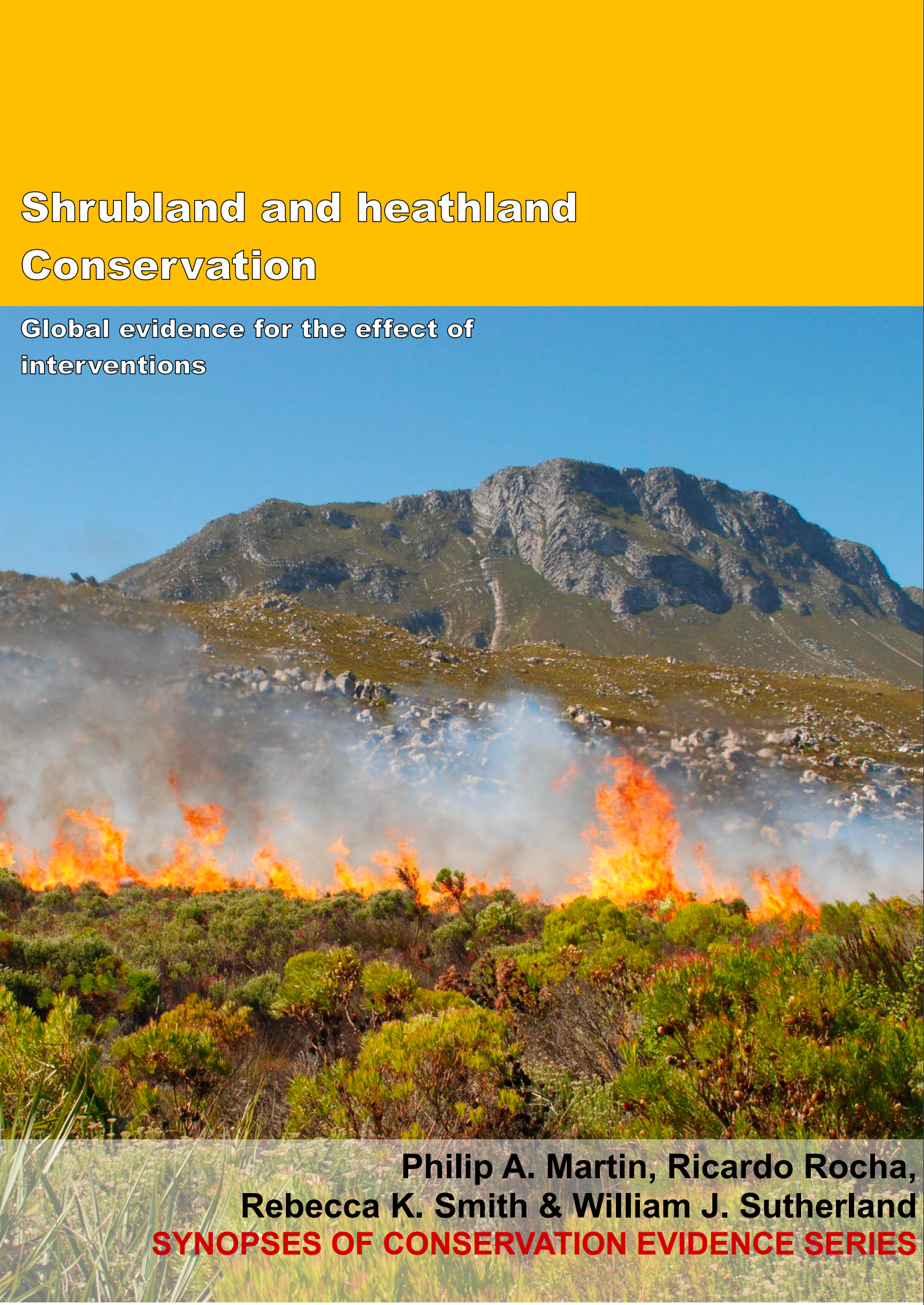Apply herbicide to trees
-
Overall effectiveness category Unknown effectiveness (limited evidence)
-
Number of studies: 2
View assessment score
Hide assessment score
How is the evidence assessed?
-
Effectiveness
40% -
Certainty
35% -
Harms
10%
Study locations
Supporting evidence from individual studies
A randomized, replicated, controlled study in 1979–1981 in a heathland in Cambridgeshire, UK (Marrs 1984) found that using herbicide to control silver birch Betula pendula saplings sometimes increased the abundance of heather Calluna vulgaris and birch seedlings while reducing the abundance of silver birch saplings. In one of three cases, plots treated with herbicide had more heather seedlings (64 seedlings/m2) than untreated plots (4 seedlings/m2). In three of three cases, plots treated with herbicide had fewer birch saplings (0–1 saplings/m2) than untreated plots (20 saplings /m2). However, in two of three cases, birch seedlings were more abundant in plots treated with herbicide (24–54 seedlings/m2) than in untreated plots (7 seedlings/m2). The herbicides fosamine, 2,4,5-T, and triclopyr were each applied in four 4 m2 plots in 1979, and in four plots no herbicide was applied. Density of birch and heather plants was estimated annually in 1980-1981 in all plots.
Study and other actions testedA replicated, controlled, before-and-after study in 2013–2014 in a fynbos site in Cape Town, South Africa (Krupek et al. 2016) found that spraying invasive orange wattle Acacia saligna trees with herbicide increased plant diversity, but not shrub cover. Plant species diversity was higher in areas treated with herbicide than in untreated areas (data presented as model results). However, shrub cover in areas treated with herbicide (2%) did not differ from untreated areas (5%). In April 2013 herbicide was sprayed on orange wattle saplings in ten 25 m2 plots, while another ten plots were left untreated. The cover and diversity of plant species was assessed using 1 m2 quadrats placed inside each plot.
Study and other actions tested
Where has this evidence come from?
List of journals searched by synopsis
All the journals searched for all synopses
This Action forms part of the Action Synopsis:
Shrubland and Heathland Conservation
Shrubland and Heathland Conservation - Published 2017
Shrubland and Heathland synopsis





)_2023.JPG)














